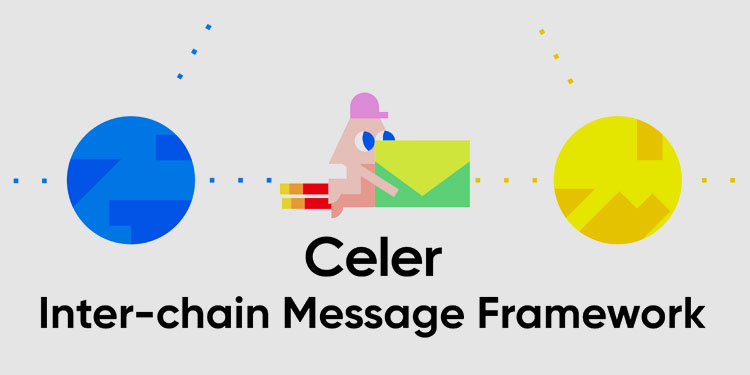Celer Network, a multi-chain operating system, today announced the mainnet launch of its inter-chain messaging (IM) framework. The mainnet launch is the culmination of years of collaboration and refinement that brings to the market a bespoke, user-friendly framework that fundamentally changes how multi-blockchain decentralized applications are built and used.
Celer’s IM framework enables developers to build inter-chain-native dApps with a single-click UX, resulting in efficient liquidity utilization, coherent application logic and shared state across multiple blockchains. This is achieved by providing a plug-and-play upgrade that often requires no modifications with already deployed code – opening up endless opportunities for blockchain developer innovation.
For example, existing DEXs can be easily upgraded to become inter-chain-native, lending protocols can seamlessly transact across different chains, and NFT marketplaces can expand so that users from one chain can bid on assets on any other chain.
“The speed of innovation in the blockchain ecosystem has led to tremendous advancements, but efforts of achieving scalability via multiple blockchains and layer-2s also bring the biggest threat to our industry’s growth. Simply put, scalability via parallel blockchains is not free. Pools of liquidity are isolated, dApps cannot communicate with one another, user experience is too complex. We developed Celer’s IM framework to create a paradigm shift in how inter-chain-native dApps are built so multiple blockchains can operate as one.”
– Mo Dong, Co-Founder of Celer
Several apps already operate successfully on the Celer IM framework…
The first was cBridge, Celer’s asset bridge, which the company launched on mainnet in 2021.
Since its launch, cBridge has been activated across 28 different blockchains and has grown to become one of the highest volume cross-chain bridges in the space with $6 billion cross-chain volume processed with over 130K users and almost $750 million in TVL.
A wide range of different use cases of the Celer IM framework is being adopted by prominent protocols to expand both their utilities and enlarge their user bases.
ChainHop, a composable multi-chain liquidity network, launched on mainnet today and integrated Celer IM to make cross-chain swaps on 20+ blockchains and 1000+ assets available in one click. Similarly, Rubic, a multi-chain swap protocol, also enabled Celer IM across multiple blockchains.
Key cross-chain interoperability infrastructure, Swing, is simplifying the cross-chain transaction process by eliminating the need to make several manual commands on multiple networks with a single transaction when communicating with other Celer IM dApps.
Recently, Celer also partnered with decentralized derivatives protocol SynFutures to support multi-blockchain futures trading, allowing users to leverage liquidity from any blockchain; and to scale its non-custodial crypto margin trading, Ooki is leveraging Celer IM to enable fee bridging among all Ooki’s different blockchain deployments.
Aperture, a cross-chain, community-driven marketplace for DeFi strategies, is leveraging Celer IM to enable one-click access to multi-chain for users from any blockchain. Solace, a decentralized insurance protocol that allows users to insure positions for over 180 DeFi protocols with one policy, is also integrating Celer IM for cross-chain insurance functionality.
Going beyond using Celer IM for DeFi applications, FutureSwap, the first decentralized, AMM-based trading protocol to offer leverage on any AMM-backed pair, is enabling cross-chain governance functionality; and Mystiko Network, the base layer of web3 that provides both connectivity and confidentiality to all blockchain data, transactions and applications, currently uses Celer IM to enable privacy protection against unwanted cross-chain data tracking and exploits.
